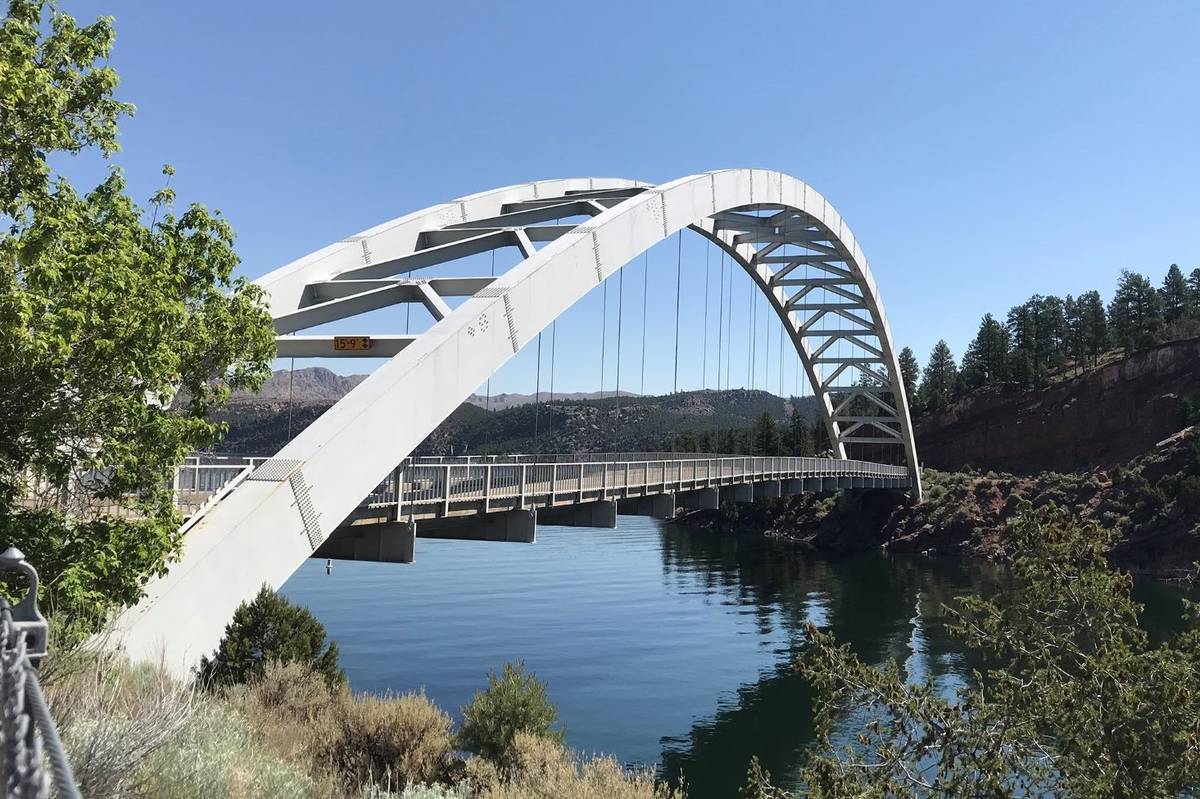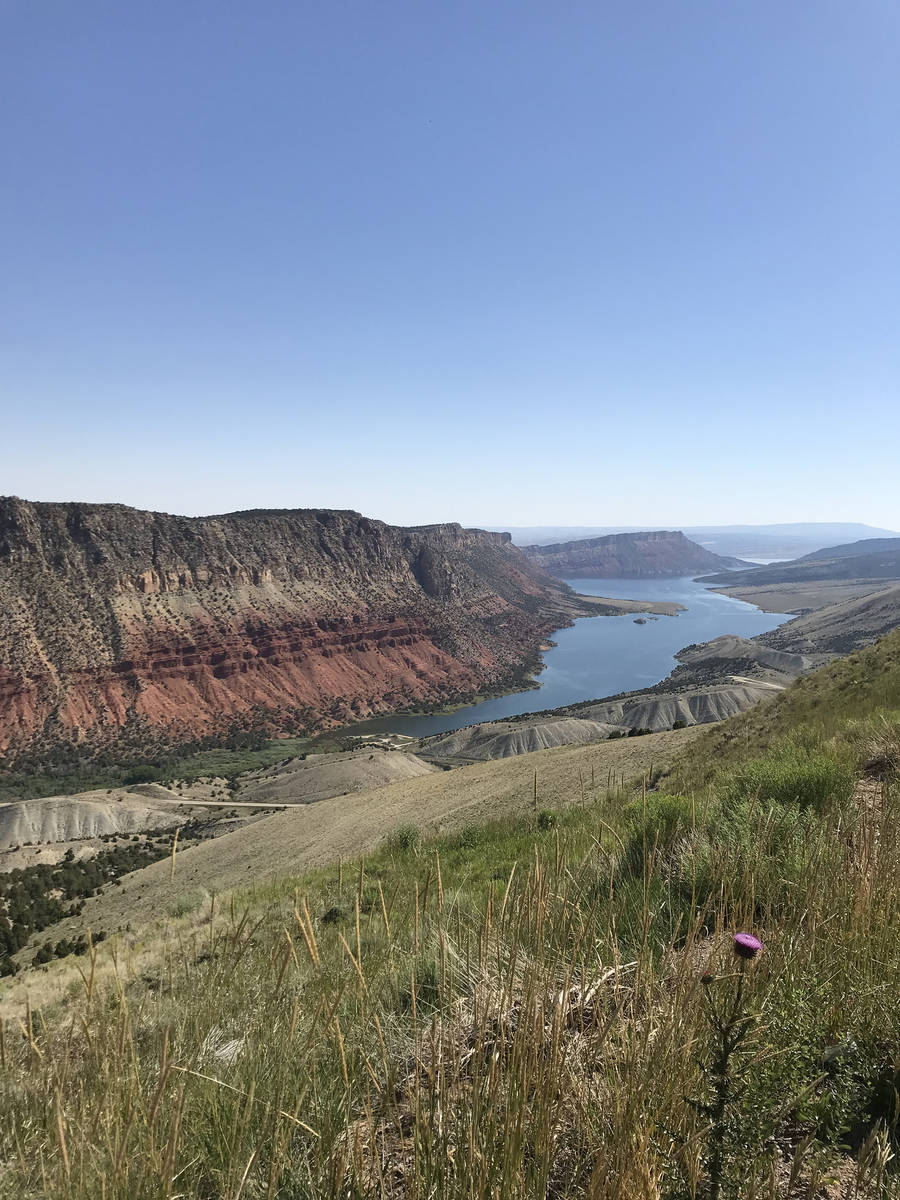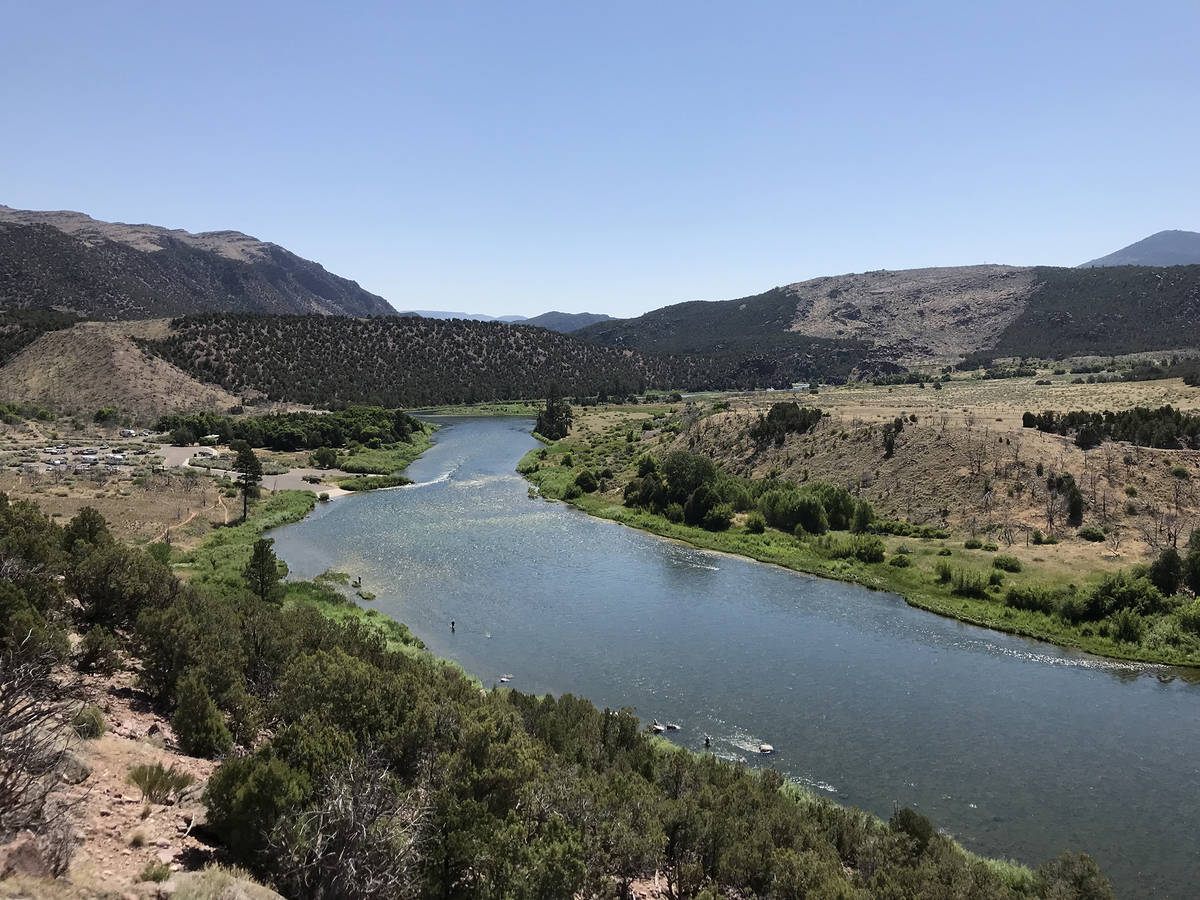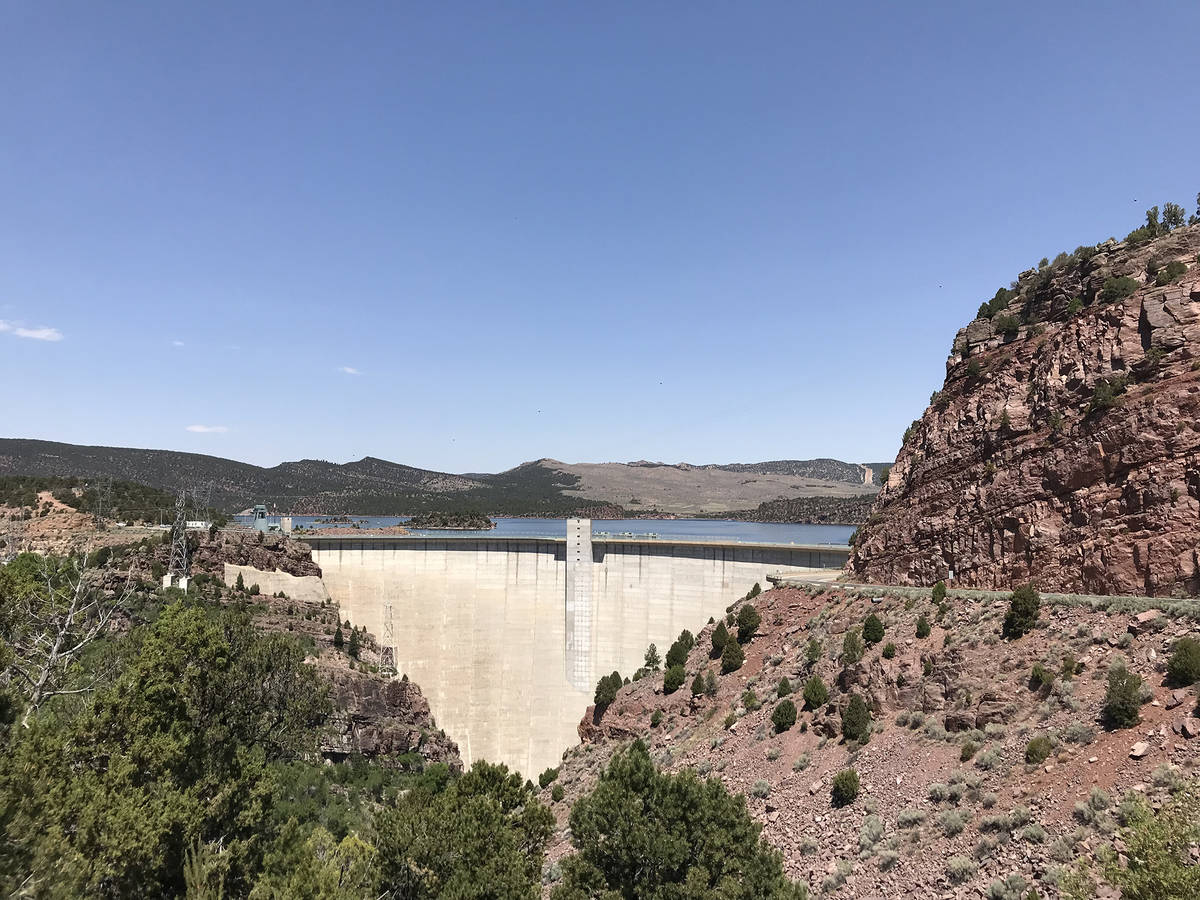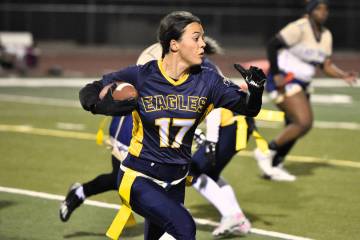Flaming Gorge known for fiery scenery, water activities
Flaming Gorge National Recreation Area, located in southwestern Wyoming and northeastern Utah, makes an ideal summer destination for those seeking cool weather, stunning scenery or lots of water-related activities. It’s about a nine-hour drive from Boulder City, but rewards the effort with remarkable opportunities to fish, boat, raft, hike, camp or just drive the scenic roads.
Summer daytime high temperatures rarely exceed the upper 80s in the lower elevations of the park, such as the reservoir itself, at about 6,000 feet. It’s even cooler in the higher elevations, such as at Red Canyon Campground, at 7,400 feet.
Flaming Gorge Reservoir, when full, is 91 miles long and covers 42,000 acres. It was created after the Flaming Gorge Dam was completed in 1964, impounding the Green River and creating more than 350 miles of shoreline.
In 1869 explorer John Wesley Powell made his way along the Green River. When traveling through this area he named it Flaming Gorge for the brilliant colors of the red rock surrounding him on his journey. You can see these fine geologic wonders yourself by boat or along one of the scenic byways and back ways. You can even encircle the entire reservoir along the Flaming Gorge Byway. This loop takes you about 200 miles through the high desert plains in Wyoming to the high country and lush forests of the Uinta Mountains and affords stunning lake views from different elevations.
It would be hard to exaggerate the area’s fame among fishermen. For anglers who prefer to fish from a boat, the reservoir is the place to do so, and there are three full-service marinas. The most popular game fish in the lake are Mackinaw trout, kokanee salmon and smallmouth bass. Trout weighing 30 pounds are caught every year.
On the Green River below the dam and the 7 miles down to Little Hole you’ll find unparalleled fly-fishing opportunities. You will see plenty of fisherman lining the bank or in the water, most wearing waders, for the water below the dam is often around 55 degrees. Most in this section are seeking rainbow and brown trout. Success is likely; it is said that some stretches of the Green River below the dam have as many as 15,000 fish per mile.
You can simply drive down to Little Hole and see the very beautiful river. But rafting the 7-mile segment is extremely popular; the trip is rated Class I or II, a mild white-water adventure. It can be done as a guided trip or on your own. No permit is required for rafting this section, and in the nearby town of Dutch John, Utah, there are businesses that rent rafts and inflatable kayaks.
For those seeking a more remote and exciting white-water outing on the Green, there are extended tours that start south of Little Hole, lasting one to several days. The Green River travels over to the state of Colorado then back through Utah where it joins the Colorado River, which empties into Lake Powell.
There are dozens of campgrounds in the area, totaling more than 600 campsites. There is also a multitude of lodging, which ranges from just the basics to full-service resorts with boat rentals, restaurants and general stores. For more information on lodging, outfitters and marinas, and the lake’s easy-to-meet requirements for fishing licenses, visit www.flaminggorgecountry.com, the website of Flaming Gorge Chamber, 95 N. First St., Manila, Utah, or call 435-277-0709. Also useful is https://utah.com/flaming-gorge.
There are several ways to access the park from south to north, depending upon your travel plans.
Many of Deborah Wall’s columns have been compiled into books about hiking in the Southwest. She is also the author of “Great Hikes, a Cerca Country Guide” and a co-author of the book “Access For All, Seeing the Southwest With Limited Mobility.” Wall can be reached at Deborabus@aol.com.

